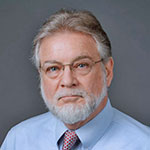
Hospitals Rarely Use Z Codes to Document Patients’ Social Risks
Billing Codes That Flag Food, Job, or Housing Insecurity in Medical Records are Underused for the Sickest Medicare Patients
News

Speaking at the 2022 Samuel P. Martin III, MD Memorial Lecture at the Leonard Davis Institute of Health Economics on April 22, health equity researcher Alicia Fernández, MD, delivered a poignant personal account of her engagement with San Francisco’s “Latino COVID pandemic” over the past two years. Her observations and insights are of value to anyone trying to understand the real world of health equity during the age of COVID-19.
Professor of Medicine and Associate Dean for Population Health and Equity at the University of California San Francisco School of Medicine, Fernández’s remarks provided an insider’s view of the often-inept initial public health response to coronavirus’ spread through the San Francisco region’s low-income Spanish-speaking communities.
She is the latest to speak at the annual lecture commemorating the life and work of an academic giant who served as the second Executive Director of LDI and as a guiding light in the expansion of LDI after its creation in 1967. Martin played a leading role in the then-nascent concept pioneered at Penn of training physicians in both the medical and business sides of health care.
Fernández started her story by noting that 40% of the population of California is Latino and that one of the challenges she and her clinical and research colleagues face is grasping the sheer size of the health disaster that has taken more than a million lives in the U.S.
“COVID-19 mortality is such an extraordinary high number that we all have trouble dealing with it and how it is distributed disproportionality among minority populations,” said Fernández. “The death rate for Blacks, Latinos, Asians, and Native Americans has, according to CDC data, been 1.7 to 2 times higher than whites. The death rate has also resulted in an astonishing drop in life expectancy of over three years in the Latino population, and about 2.7 years in the Black population.”
A practicing primary care physician at Zuckerberg San Francisco General Hospital in the city’s heavily Latino Mission District, Fernández is also Director of the UCSF Center for Vulnerable Populations’ Program in Latinx and Immigrant Health, and the founder of another center focused on increasing the number of Latino physicians in the UCSF health system.
San Francisco’s first COVID-19 cases were diagnosed in the second week of March, 2020. By the third week of that month, Fernandez received an alert that all ten of the first positive cases at her hospital were monolingual Spanish-speaking patients. During the next month, 80% of COVID-19 patients admitted to that facility were Latinos — up from a 30% mix of monolingual and bilingual Latino patient rates in normal times.
“A bunch of us met, asking ‘What is going on and how do we handle this?'” Fernández recalled. “Some argued we should publicly tell people. Others argued no, because it will have a stigmatizing effect and people will run away from Latinos on the street and not come to the Latino business district. In the end, we had to announce that we had a Latino COVID problem here in the Mission and Bayview, neighborhoods that have large minority and immigrant populations.”
“At subsequent UCSF town halls and grand rounds, many were saying San Francisco is doing great because the infection rate was less than 1% of the population,” said Fernández. “But outside the windows of our hospital in the Mission District, we were seeing infection rates up to 5-8% and it was almost impossible to get people’s attention on that.”
“Some of my colleagues in the HIV and Global HIV Division began a geographic area study by taking one ethnically diverse census tract in the Mission District that had 4,000 people in it,” Fernández said.” They tested 70% of the people and came up with 61 positive COVID cases — all but one of which were Latinos. This was interesting because it told us that the virus was then spreading exclusively through social networks of people, usually through a family worker doing essential work.”
Another alarming finding of the surveys and studies Fernández and others were doing was that between 15 and 20% of the people in these same Latino social networks were afraid to come to the hospital for fear of being deported, even though San Francisco is a sanctuary city in a sanctuary state.
“The virus was highlighting to me in a totally different way how enormous segregation is in our social and employment lives,” said Fernández. “Even when you pick a very diverse census block like those in the Mission District, it shows that the virus moves through social networks and shows us very clearly, by who gets sick, how segregated our lives really are.”
By September of 2020, UCSF researchers were getting philanthropic funding for community COVID testing and data gathering programs across the region. Fernandez’s team focused on Fruitvale, the hardest hit COVID neighborhood in Oakland where 50% of the population is Latino. Included in that were Guatemalan immigrants who identify as Mayans — an ethnic group that speaks 16 different Mesoamerican languages, but not necessarily Spanish. Although Spanish is the most prominent language in Guatemala, most immigrants in Fruitvale never had the opportunity to attend school to learn Spanish in their native land. As a result, even when Spanish language messages and materials about COVID were available in the broader Oakland community, they were not accessible to non-Spanish speaking Mayans.
Surveyors found that 27% of those who spoke Mayan showed signs of a past coronavirus infection. Additionally, they also found that the overall Fruitvale Latino population was experiencing “extraordinary amounts of food insecurity.” That same hunger crisis was emerging across similar communities in the region.
“COVID was as great a revealer as it was an enforcer of disparities, particularly with the loss of wealth,” said Fernández.” There was an eviction moratorium, which was great, but people kept paying their rent and used up all their money.”
When Fernández noticed a change in the glycemic control of one of her patients with diabetes who worked in a restaurant, she asked him what was going on. He explained that he used to eat at the restaurant as part of his job, but the pandemic eliminated that job. Now he lived in a room that didn’t have cooking facilities. Every day he ate one can of cold black beans, one piece of feta cheese and one avocado.
“The food line in the Mission District got to be 14 blocks long, with people arriving at 5 a.m. for food that wasn’t distributed until noon,” said Fernández. “Just like in Fruitvale, what we saw for the first time in San Francisco was real hunger. I work at a safety net hospital and know food insecurity — but I had never seen this level of hunger before.”
A March to October 2020 study of excess mortality among Latinos led by Fernandez’ colleague Kirsten Bibbins-Domingo, MD, PhD, found there had been a 31% increase in unexpected Latino deaths throughout California. Another finding was that foreign born California Latinos had higher excess mortality rates than native-born Latinos, particularly among essential workers in agriculture, food services, warehouses, and manufacturing.
“In sum,” said Fernández, “the COVID-19 pandemic has disproportionately impacted mortality among Latino immigrants, especially those in unprotected essential jobs. Nothing was more disturbing for me than the lack of OSHA protection. Over and over again we would document outbreaks in these giant warehouses and factories and nothing would be done about it.”
“What COVID highlighted for me was the importance of subgroupings among this ocean of poor people, like the Mayan subgroup, or the different occupational categories” said Fernández. “There are a lot of essential workers in San Francisco — people who are bus drivers and so forth. But they weren’t getting COVID. It was tracking along these social and occupational networks that were highly segregated as non-obvious subgroups. It was good to have this reality directly highlighted in the disease — something to remember moving forward and when thinking about interventions for the next public health emergency.”
About eight months into the pandemic, the data gathered by health equity researchers played a role in the Director of the San Francisco Department of Public Health’s decision to have his staff cease calling the coronavirus crisis the “COVID pandemic,” and, instead, refer to it the “Latino COVID pandemic.”
Despite such official recognition and the mounting data about the Latino community’s high infection rate and vulnerability, much of the city’s health care network continued to think and plan in terms of English-speaking communities.
Inside the UCSF health system that provides half the care throughout San Francisco, it was decided to use the MyChart portal system to send an English language electronic medical record message to patients about the availability of COVID testing that was being set up in one parking lot in the city.
Fernández did not understand the logic of this.
“We already knew from internal data that limited English proficiency (LEP) patients, older patients, and minority patients generally weren’t on MyChart and didn’t have access to this information,” said Fernández. “So, the website message was available only in English until December 2020. Finally, a physician — me — translated it because it was very confusing for us not to have that in Spanish. Our thought was that we have five threshold languages in San Francisco, and we should put the message up in all of them. But the pushback was that the website wasn’t set up for that, or there wasn’t enough space to do that. I think we can call this structural racism.”
The next part of Fernández’s experience became almost surreal as long-running efforts to remove race from various diagnostic procedures collided with her group’s emergency efforts to target the local Latino community with COVID-19 safety messages.
“It was a really difficult situation,” Fernández said. “Our positive test rate among Latinos was too high. This was partly a sign that we weren’t testing enough people.”
“To address this, we decided to contact all the Latino patients with a robocall that enabled them to listen to messages in English or Spanish,” Fernández. “It would tell them where they could go for testing and provide the ability to talk to a live bilingual staffer who could help them make an appointment to get tested. That’s what we set out to do; but then we were stopped by the Quality Improvement staff, that said they wouldn’t do it. They had just undergone a long process trying to get patient race out of the GFR equation for renal failure. Their subsequent thinking was that using race in any aspect of medicine is wrong and, consequently, us wanting to reach out directly to Latinos was wrong and we should not do it.”
“It really set us back and we had to work very hard with folks to get them to understand the difference between using race as a marker of a higher pretest probability for disease and using it as a marker for biological vulnerability. We were finally able to send the message in January.”
“There was a great deal of conceptual confusion about this issue,” Fernández continued. “Is it ever OK to use race? If I say Latinos are disproportionately affected by COVID, what am I saying to middle class Latinos who are attorneys and working from home? And is this denigrating in some way? It’s a real question. And then, finally, in any complex system, there’s very high levels of variation in health equity and cultural competency.”
“I have a physician’s bias, which is we need to understand a problem and its solution and then need to make it happen,” said Fernández. “But what becomes clearer in the real world is that making anything happen takes so many people we need to create capacity at all levels of the organization. It’s not just the leadership or line physicians that need to understand health equity. That level of competency needs to flow through the entire organization.”
“Another reflection that came out of this experience is that the distinction between fairness and equity can be really hard to grapple with in the real world,” Fernández said. “One of the biggest recommendations in the COVID response effort after vaccinations became available was that the older people need to be vaccinated first. The risk factor seemed obvious, and the recommendation seemed absolutely fair. But was it?”
“When we did the numbers, we found that protecting people over 65 prevents 80% of deaths among whites and Asians, but only 65% of deaths among Blacks and under 60% among Latinos,” Fernández said. “So, all of a sudden, something that looks absolutely fair and solidly clinically-based starts looking like it isn’t all that fair. That was the negotiation going on at the state level with many of us in academic circles. We wanted to do vaccination distribution strategies based on age-plus-place rather than simply age for everyone. We were able to get that through in our county, but not in all other parts of California. It was an education for me on how hard it is to get this concept (fairness vs equity) accepted.”
Fernandez’s San Francisco experiences led her and colleague Bibbins-Domingo to write the March 24, 2022 JAMA Forum piece: “Physician-Public Health Practitioners — the Missing Academic Medicine Career Track.”
The two authors explain: “The COVID-19 pandemic has required rapid innovation and adaptation throughout health care services… One welcome development was the success of the many partnerships that formed between academic medical centers, community-based organizations, and departments of public health to offer COVID-19 testing, vaccination, contact tracing, and public health training, and even conduct pragmatic research. The history of these partnerships remains to be fully explored and written. However, our experiences in the San Francisco Bay Area highlight some of the roles that academic physicians have played and continue to play in these partnerships. These experiences support the idea that population health is an important function of academic medical centers, and that the role of academic physicians engaged in this work as ‘physician–public health practitioners’ warrants recognition and development as a distinct academic career track.”


Billing Codes That Flag Food, Job, or Housing Insecurity in Medical Records are Underused for the Sickest Medicare Patients

Experts Say Nursing Ethics Can Help Researchers Confront Federal Disinvestment, Defend Science, and Advance Health Equity

Study Finds Major Gaps in Cardiac Care Behind Bars

Eighth Year of Program That Recruits, Mentors and Develops Junior Faculty for Health Services Research

Chart of the Day: National Study Shows White Patients More Likely Than Black Patients to Get CT and/or Ultrasounds for Abdominal Pain in the Emergency Department

LDI Fellows Uncover Six Key Barriers and Solutions to Achieving Better Hospital Care